Macro photography is all about making small items look larger than life. Anything from insects, flowers, and plants can become the focus of your photos.
Let’s dive into everything you need to know about macro photography!

What Is Macro Photography?
Macro photography can be a challenging type of photography to pursue.
You have to work with very shallow depths of field and long shutter speeds. You will also find yourself working in tight spaces.
Your attention to detail needs to be very high, and you have to have an endless supply of patience.
Not to mention that your subjects might try to fly or slither away!
Our guide has all the information to help you start photographing the little things. It will help you improve your skills if you’re already familiar with macro, too.
Macro vs. Micro Vs. Close-Up Photography
Although some people see these as being the same thing, or at least similar, there is a difference.
Macro photography is capturing something small and making it look larger than life.

Understanding Depth of Field
Depth of field is one of the most important areas of photography. Don’t overlook it as it will affect the type of camera (crop vs full frame) and the lenses you choose.
At its most basic, the depth of field is the amount of any scene you place in focus. This is something that is determined by the aperture.
But distance and focal length also play important parts. Read here to understand the basics and more advanced ideas on using depth of field in photography.

30 Amazing Macro Photographers to Follow
To be successful in macro photography, you need to have some sort of inspiration. Figuring out everything yourself, including your style, can be a hard task for beginners.
So why not be inspired by looking at the images of some of the masters in this genre?
We’ve collected some of our favorite macro artists in this list. You can follow them for continuous inspiration.

Camera Equipment
When it comes to macro, the camera equipment you need can be quite different from other fields. The setup you’d use to photograph landscapes, people, streets, or even the stars won’t work here.
The majority of macro photographers use a DSLR, and this is also the most versatile camera. Mirrorless cameras are also possible. There are even specific point-and-shoot models for macro photography.
We will concentrate on DSLRs, but also talk about other options.
Best Macro Photography Cameras (Top 10)
When it comes to macro photography, the importance falls on the lens, rather than the camera itself. But this doesn’t mean that the camera you use isn’t important. As a matter of fact, the camera can influence your choice of lens.
It is possible to shoot a macro photograph on a point-and-shoot camera with a fixed lens. But only as long as it can produce a minimum of 1:1 life-size ratio of the subject. This is what makes an image a macro photography image, rather than a close-up.
This extensive review article runs through the most common camera types. DSLRs, mirrorless, and point-and-shoot are all possible for photographing this macro world.

Inexpensive Options for Shooting Macro Photography
In this long article, we show you several ways to start or step up your macro photography on a budget.
There’s a high chance that you already have much of the equipment to dive right in. Often, you only need just a few cheap accessories and you’re ready to go.

How To Use a Macro Bellows for Extreme Close-Up Photography
Using a macro bellows is an old-school method of getting awesome macro images. And it’s still effective! This accessory can be found for really cheap online. So you might be tempted to choose it over extension tubes, for example.
In this article, we’ll teach you how to find the best one for your needs and how to get the most out of it. You’ll learn its advantages and disadvantages. You’ll also get to know which lenses are best to use with a bellows.

A Guide to Using Macro Filters for Close-Up Photography
Another cheap way to photograph the macro world is by using close-up filters, or diopters. A great advantage of these is that they’re not limited to interchangeable-lens cameras.
You can use a macro filter with any camera that has a filter thread on the lens. But with a cheap clip-on accessory, you can even use it on a lens that doesn’t have a thread.
This article will teach you how to get the most out of macro filters.
What Is A Macro Focusing Rail (and How to Use One!)
Focusing rails can make your macro photography a lot easier. They give you more precise control than the focusing ring on your camera does. The only thing you need to make them work is a solid tripod.
In this article, we will teach you how to use focusing rails to get better macro photographs.

5 Steps to Understanding the Crop Factor
A crop sensor is one thing about your camera choice that could impact your macro photography. If your camera has a crop sensor rather than a full frame sensor, you’d be able to get closer to your subject.
The compromise here is that it would cut down on how much light your sensor takes in.
Full frame lenses on a crop sensor camera affect the focal length of the lens. Your scene is drastically magnified.
If you were to use the Canon EF 100mm f/2.8L IS USM on a crop sensor camera, it would crop (multiply) the focal length by 1.6x. This forces the 100mm focal length to behave like a 160mm.
This would, in turn, get you closer to your subject. And it also helps you avoid spending a ton of money on a new telephoto lens.

Top Macro Photography Lens Recommendations
The lens is the most important thing to consider when working with macro photography.
If you are just getting started, then choosing a general macro lens is a good place to start. It will give you time to get used to this new style before moving on to a dedicated macro lens.
This article runs through the best lenses to use to capture this new little world.
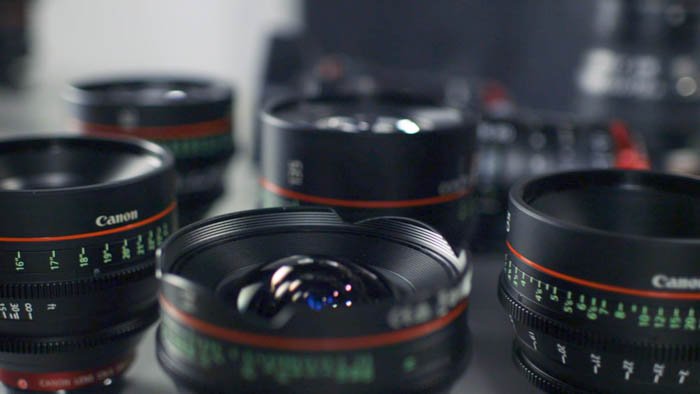
A Beginner’s Guide to Macro Photography Accessories
The accessories you need will depend on your subject. There are many macro photography accessories available.
These help you get the best out of all styles of macro shots. Extension tubes and adapters can be very handy. But other equipment might be worth buying.
These may include items to help you arrange your subjects properly. Tweezers, brushes, and focusing rails should be considered.
Our article will take you through the many accessories you can use to improve your macro photography.
Their usefulness will soon be obvious. You’ll wonder how you did without them.
Tripods for Food and Macro Photography
A tripod will keep your camera still, helping to avoid camera shake. The tripods in this article are not specifically designed for macro photography. But they can be applied for macro uses just as well as for food photography.
They will also give you those aerial, top-down images you see so often.
A great tripod is a secure place to keep your camera while you are spending hours arranging a scene. And it ensures the perspective doesn’t change.
Having a tripod allows you to use manual focus. This means you can make sure you have the focal point where you want it. This is necessary for image stacking.
Here is our article on why a tripod is important for taking good macro photography images.

How to Make Your Own DIY Photography Light Box
If you prefer to capture macro photography from the comfort of your own home, we have an idea for you.
A lightbox is a great way to light small to medium-sized objects. The device allows you to capture a subject in a white space. This is reminiscent of product photography.
This is a great way to reduce and cut out distracting backgrounds or foregrounds.
Making one of these lightboxes is easy and it won’t break the bank. Start today and simplify your macro photography.

How to Use Lens Reversing Rings for Macro Photography
Macro photography can be an expensive hobby. The Canon EF 100mm f/2.8L IS USM Macro Lens costs a pretty penny. And so do specialty Nikon lenses. Especially if you don’t plan on using it very often.
For those who are more DIY minded, there are other possibilities.
Lens reversing rings are just one way you can capture macro photography. Especially without spending a fortune.
The greatest part of this method is you already have 95% of everything you need—your lens.
You just need a ring to connect the front of your lens to the camera body. It’s cheap, cheerful, and very effective.

How to Use Extension Tubes for Close-Up Photography
Extension tubes are the second method you can use to capture great macro photography images without spending a fortune.
These extension tubes extend the lenses that you already have. They usually come in three different sizes—7, 14, and 28mm.
They can be easily stacked too, extending your lens by up to a maximum of 49mm.
If you are feeling fancy, you can also go for extension tubes with digital contacts. Or get some close-up filters.
Extension tubes allow your lens to still communicate with your camera. They retain settings and autofocus capabilities.
Read our post here for all the information on where to get them and how to use them.

8 Best Tips For Macro Flash Photography
One of the easiest ways to step up your game in macro photography is by using more and better-quality light. In this article, you’ll get to know the things we deem most important to successfully using flashes in macro photography.
These tips will help your photography stand out from the crowd. They will give your images a professional look and feel.
And most importantly, if the tips aren’t totally free, they’re very cheap.

How To Make an Easy DIY Flash Diffuser for Macro Photography
Want to use your existing flash but can’t get a diffuser? Worry no more. This article has you covered.
You’ll learn how to quickly assemble a DIY flash diffuser from cheap household materials. This way, you’ll be able to use your built-in or external flash for macro photography.
You’ll get nice, soft, diffused light on your macro subject from this simple and cheap contraption. It might even transform how you approach macro and DIY photography.
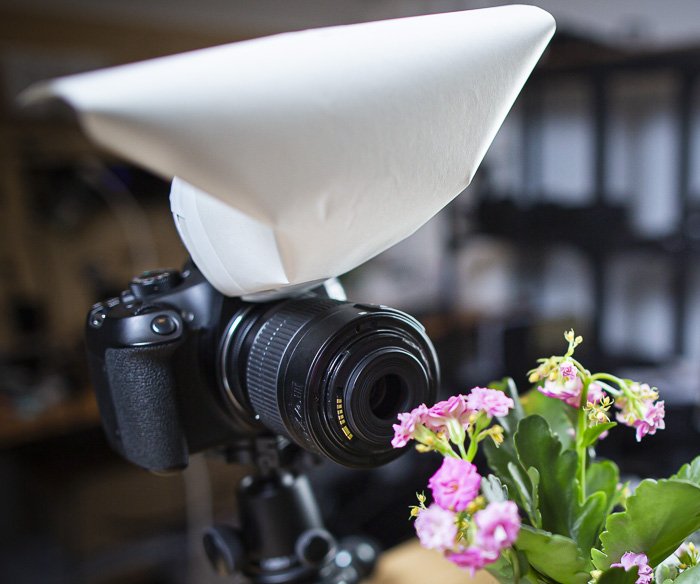
What Is The Best Macro Lens for iPhone Photography?
Straying away from large and heavy cameras, it’s time to do some macro photography with your iPhone.
In this article, we’ve reviewed some of the best clip-on macro lenses on the market. They won’t provide the same detail and quality that a proper DSLR macro setup would. But that’s not the point.
With these clip-on lenses, you can shoot macro photography wherever you go.

Macro Photography Techniques
How To Get Started
Choose your camera, pick the right lenses, and decide on what area you want to photograph. Now it’s time to get started.
Regardless of whether it’s insects or food, each style will come down to practice and patience.
Here is a great guide to ease you into macro photography, showing you what to look for and focus on. There’s a whole world out there just waiting to be discovered.

In-Camera Settings
One of the most important factors with macro photography is the aperture.
This gives you control over the light and the depth of field.
Having a low aperture will allow you more control over the shutter speed. This is very helpful for moving objects, such as insects.
This comprehensive guide to in-camera settings gives you all you need to know. There’s no excuse for not achieving stunning results.

10 Tips for Macro iPhone Photography
Macro photography isn’t just for DSLR cameras. You can easily capture macro images with your iPhone camera. The benefit is that this is the camera that you are more likely to have with you.
All you need is a macro lens and a few tricks up your sleeve. Luckily we have all the tips you’ll need. All you need to do is find the iPhone lens and read through our article.

21 Macro Photography Ideas You Can Try Today
If you’re wondering when you can shoot macro photography, the answer is all the time! Every season has its own elements that will benefit your photography.
This article helps you to understand that researching, especially local areas, can be very advantageous. Especially in the search for creative and fun small objects to shoot.
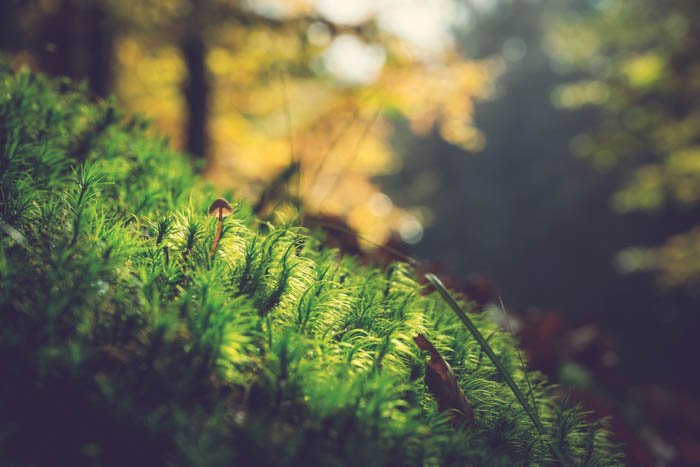
10 Tips for Shooting With Macro Lenses in Still-Life Photography
Macro lenses aren’t just for photographing creepy-crawlies up close. They are useful for a multitude of other photographic fields.
These lenses are great for just about anything. The only difference between a macro lens and a normal telephoto lens is the short focusing distance.
The Canon EF 100mm f/2.8L IS USM Macro Lens has a minimum focusing distance of 30 cm. So if you’re going to invest in a macro lens, know that you can use it for other photography fields.
For the other nine macro photography tips, you need to read our article above.

17 Macro Photography Projects for Beginners
Everything that you can photograph could be a macro image. You just have to let your creative side run wild and see the world in a different way.
Get as close to items as you can to see the change in perspective. It is possible that new ideas and creativity could be born and something unique created.
This is a great article for inspiration to help get you started.

How To Get the Best Lighting for Macro Photography
Whether you are photographing food or insects, your image will need some extra light. Because you are using wide apertures and long focal lengths, ambient light isn’t enough.
These can be in the form of natural light, used with a reflector or from an external unit like a flashgun or ring flash.
This article shows you the possibilities out there. It will help you harness this added light to get the best out of your macro photography.

How to Use Focus Stacking in Macro Photography
Focus stacking is a major part of macro photography. It might be a necessity for the subject you are capturing.
By capturing a subject really close, you need more light. To utilize the light, you need a wide aperture. A wide aperture gives you a very small depth of field, meaning not all of your subject is in focus.
By focus stacking, you are able to capture many images at different focal points. Stitching them together gives you a subject that’s entirely in focus.
Read here for all the help you need to use focus stacking in macro photography.

Types of Macro Photography
12 Tips for Perfect Flower Photography
Flowers are one of the best subjects for macro photography. Not only do they stay relatively still when you capture them, but they are also available in all shapes, sizes, and colors.
By capturing them in a macro way, you are able to create something truly interesting and even abstract. The simplest tip here is that you really need to make sure that part of the flower is in focus.
It is easy to capture a subject closely and just miss the focus. It might not be obvious until you get to your computer screen at home. And then, it’s too late. Reading the article above will help you avoid such an unfortunate situation.

How to Take Beautiful Butterfly Photography
Butterfly photography starts with trying to find the butterflies you want to capture. Then, we use macro photography to make sure we include all of the beautiful details in the scene.
With this field, you need to think about the setting you want, how to entice the butterflies, and how to avoid spooking them.
Luckily we have all the information you’ll need. You’ll leave your chrysalis stage in no time.

Macro Photography of Flowers
One of the easiest areas of macro photography to start with is plants and flowers.
They don’t need any cooking like food photography. And they don’t have a mind of their own like insects.
With a few simple composition rules, you can get great results. One thing you’ll need to think about is movement.
This article will guide you through the intricacies of macro flower photography. You’ll be sure to capture some amazing pictures.

Beat the Winter Blues With Creative Snowflake Photography
Snowflakes are one of nature’s most beautiful creations. They aren’t that common depending on where you live. And each one is as unique as a fingerprint.
Capturing them isn’t exactly easy, but all of these points make for an interesting subject. It’s one that wows viewers and has them guessing how you did it.
You can use these images as rare wall art images or on a seasonal holiday card. Find out here how to get creative with macro snowflake photography.

Tips for Taking Beautiful Dragonfly Pictures
Dragonflies are very interesting subjects for macro photography. One of the benefits of using these as subjects is they are rarely captured.
As far as insects go, the dragonfly is a very interesting and beautiful creature. They’re less scary than a spider, allowing you to stay out for longer periods of time shooting them.
If you can capture one in mid-air, you’ll be the toast of the town. An image such as this is incredibly rare! And the first step is reading our article.
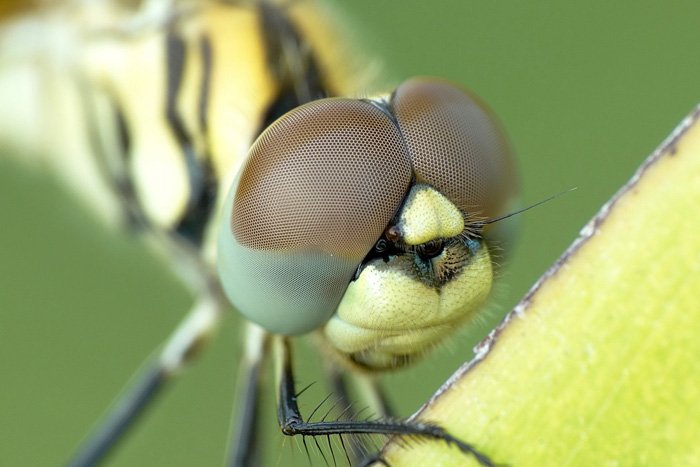
Macro Photography of Insects
The interesting world of insects is one of the most popular areas to photograph using macro photography. It allows these very tiny creatures to be photographed and enlarged. They become huge monsters in fantasy novels.
But this area is also one of the most difficult and time-consuming to photograph. You are dependent on these creatures. It’s difficult to get them exactly where you want them and to do exactly what you want.
This article looks at all the aspects to get you on your feet. You’ll want to go full-speed into the world of insect macro photography.

Get Creative With 5 Abstract Macro Photography Ideas
With any type of abstract photography, you are looking to create something interesting and creative. This can be a challenge because you’ll need to look at everyday items in a different way.
Macro photography is no different. It also focuses on things such as texture, composition, and light. At the same time, you need to use a very shallow depth of field.
This extensive article runs through just about all you need to know. Especially when you want to get deep into this style of macro photography.

How to Take Amazing Macro Pictures of Eyes
There is no field more niche than that of macro eye photography.
This field is a fusion of landscape, astro, and abstract photography. You’ll find out how these ideas tie together in the article above.
As far as macro photography goes, this field is a bit more challenging. It isn’t a small, speedy project to undertake in your free time.
It is, however, interesting. Our article will show you a glimpse into what is possible to achieve with time, patience, and practice.
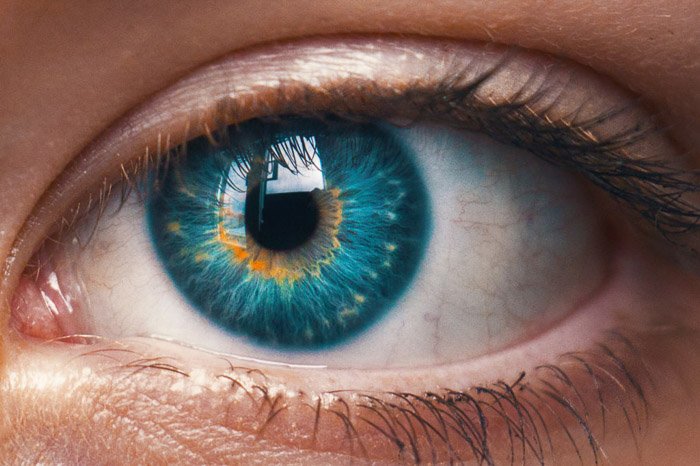
Get Creative With Close-Up And Macro Food Photography
Food photography is about showing off creations from the kitchen.
Usually, it’s the final stage that we see. It’s where preparation and presentation come together to find harmony.
Macro photography focused on food is all about the details, textures, and shapes.
It looks directly at the ingredients. Or perhaps a small part of the finished product rather than the style.
This article gives a great in-depth look at how to treat food as a subject and photograph it with great success!

How to Shoot Creative Macro and Close-Up Leaf Photography
Leaf photography might sound limiting, but it’s a very creative genre. You can use macro photography to emphasize the beauty of even simple leaves.
You can strengthen your creativity and your macro leaf photography skills with this guide.

Composition
What Is the Lead Room Principle in Photography?
There are different compositional rules when it comes to photographing any subject. Macro photography is no different.
Capturing living creatures in the great outdoors needs something special.
Leaving space in front of the creature’s eyes can be very appealing. Negative or “empty” space helps force your eyes to what is important in the image.
Having the subject look at the closest frame edge is unpleasing. This article helps to give you insight into how to best frame your subjects.

8 Techniques for Using Visual Weight in Photography Composition
The compositional weight concept refers to the visual elements of your image. You can use it to balance your macro photography.
This is something to look at for creating the most visually appealing images.
We use weight because of its powerful tool of composition. Different objects, their colors, darkness, and size have varying degrees of importance in an image.
To get the best out of your images, this weight needs to be balanced.
Using two or more objects can create visual harmony. Other times, focusing on one subject can give you the best results.

How Diagonal Lines Add Direction and Dynamics to Your Photos
Diagonal lines are compositional values that can subtly add movement to an image. Or give depth to an otherwise flat image.
They can have a relationship with the frames of the photograph. They help to draw the viewer’s focus toward the most interesting part of the image.
This in-depth article helps you understand why and how to use these lines. They aim to make your images more appealing.

Macro Photography Post-Processing
How to Process Macro Photography for Stunning Results
When you work with your macro photography, it is important to use the tools that help you get the best out of your work.
Adobe Photoshop and Lightroom are industry standards. They help you get the most out of your images.
You may even have to go through the RAW software. This software helps bring out details in the shadows and mute those highlights.
Here is a very detailed look from start to finish. Here we can see how a flower photographer goes through his post-processing choices.

What Is Focus Stacking and How to Use It Correctly
Focus stacking is a great tool to use when photographing macro objects. This technique is especially helpful for the smallest subjects.
Due to the size of your subject, the long focal length, and the close distance, your depth of field will be small. Focus stacking helps to create a wider depth of field.
The basic idea is that you take multiple images. Each shot focuses on a different part of the subject, at a shallow depth of field.
These are then layered or “stacked” together so that the final result gives you an object that’s entirely in focus.
Here is an in-depth photography tutorial that you can use to start focus stacking and keep your whole subject in focus.

Conclusion
After browsing through this extensive guide, we hope you have a better understanding of macro photography. At the very least, it will inspire you and give you some creative options to play with!
Whether you’re interested in food, insects, or flowers, there’s something for everyone to begin shooting macro!
Don’t forget to check out our Macro Magic course!

